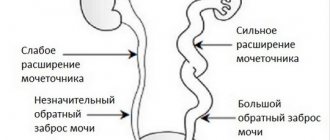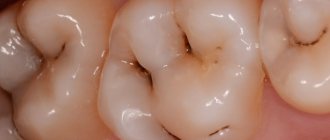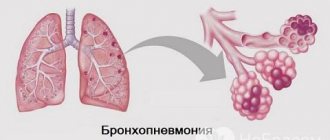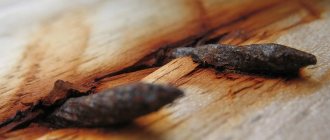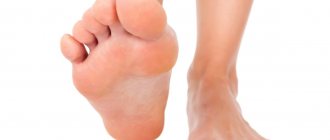Causes of nephroptosis
To fix the kidneys, various ligaments, muscles, tissues, and fat capsules are used. If the functions of one of the connecting elements are lost, a pathological process such as nephroptosis . There are a number of factors that may contribute to this:
- Dramatic weight loss
- Hereditary defects of internal organs
- Hard physical work
- Various diseases of muscles and nerves, in which their tone decreases
- Strength sports
- Constant shaking (typical for drivers)
- Injuries, ligament rupture
- Frequent standing in an upright position
- Pregnancy, childbirth (especially with multiple births or with a large fetus)
How to treat kidney prolapse?
If the kidney is prolapsed and symptoms are identified, then the doctor prescribes treatment for the disease, which consists of returning it to its original bed and fixing it. There are 2 types of therapy for this pathology:
- Conservative therapy includes physical therapy and wearing a support bandage. Therapeutic gymnastics helps strengthen the muscles of the peritoneum and lower back, normalizing intra-abdominal pressure. The bandage should be recommended by the attending physician, taking into account the size and the presence or absence of contraindications. Patients can purchase the product in pharmacies, where there is a large selection of such belts.
- A surgical operation in which the organ is sutured to the ribs and peritoneum using synthetic materials or fixed with muscles and ligaments. Rehabilitation after laparoscopy takes place within 2 days in a hospital setting. Then the patient is discharged from the hospital for follow-up at the clinic.
Symptoms
In the initial stages of nephroptosis, symptoms usually do not appear. However, in a certain position while inhaling, you can feel the kidney. At first, it easily moves into place and lowers into the correct position on its own when the person is lying down. This disease may be accompanied by accompanying symptoms such as
- Painful sensations in the lumbar region in an upright position
- Blood in urine
- The occurrence of renal colic
- Dysfunction of the gastrointestinal tract
- Increased blood pressure
- Headaches, dizziness
- Weakness, sleep disturbance
- Constant feeling of tiredness, fatigue
- Irritability
- Nocturnal diuresis
- Tachycardia
- Nausea
- Abnormal stool
- Loss of appetite
Changes during prolapse and the reasons for their occurrence
The organ in normal condition is located in the retroperitoneal region, the upper part of the lower back. The kidneys are located on the sides of the spine. The right one is 10-15 mm lower than the left one, located at the level of the first lumbar vertebra.
When a person changes body position, organs can move. Their movement in the vertical or horizontal direction is normal if it does not exceed 1-2 cm.
The organ is held in place by a capsule and ligaments that are attached to the spine. They are also held in place by intra-abdominal pressure. But sometimes cases arise when these factors decrease, resulting in organ prolapse. More often it is one-sided. In most cases, the right kidney is prolapsed.
The organ leaves the bed and goes down either into the abdominal cavity or into the pelvic area. The organ can descend as far as the ligaments allow. In this case, not only the kidneys, but also the ureter, nerves and blood vessels descend, their direction changes, which leads to complications. Kidney prolapse occurs for the following reasons:
- Abdominal or back injuries that weaken the abdominal muscles and ligaments. This can cause large hematomas and tendon sprains.
- Sharp weight loss, which reduces the volume of adipose tissue near the kidneys.
- Congenital anomalies of organs or bones that push the organ down (rib injuries, spinal diseases).
- Rapid human growth during adolescence.
- Pregnancy. In pregnant women, nephroptosis develops due to weakness of the muscles of the anterior abdominal wall and a decrease in intra-abdominal pressure.
- Insufficient development of connective tissue, ligaments and fascia can cause nephroptosis.
- The disease can be provoked by visceroptosis (sinking of other organs) and mobile joints.
There are risk groups of people who may develop nephroptosis. This includes people whose work involves lifting heavy objects or requires standing for a long time (loaders, hairdressers, salespeople).
Diagnostics
Correct diagnosis of this pathology requires an integrated approach. The doctor listens to the patient’s complaints, studies the anamnesis, conducts an examination, and palpates. In addition, additional laboratory and instrumental examinations are prescribed. Various urine and blood tests are required, glomerular filtration rate testing, and blood pressure monitoring are performed. Ultrasound, excretory urography, radiography, renal angiography, radioisotope nephroscintigraphy, venography, MRI or CT are also prescribed. In certain cases, examinations of the gastrointestinal tract may be performed.
Prevention
To avoid kidney movement, you should learn healthy habits:
- From childhood, watch your posture (at school age), toughen up, and evenly load both hands.
- Eat a varied diet.
- Perform physical therapy exercises.
- Watch your weight.
- Throughout the day, rest repeatedly in a lying position for better urine flow and normalization of blood circulation.
- Avoid radical weight loss, hypothermia of the legs and pelvic organs, and injury to the lumbar region.
- Do not lift heavy objects.
- Pregnant women wear a prenatal bandage.
- Avoid vibrations.
Types of nephroptosis
There are 3 stages of development of nephroptosis, each of which has its own symptoms and manifestations. The following forms are distinguished:
- Initial. The kidney descends only when inhaling in a standing position. No symptoms
- Average. The kidney can be felt through the abdominal cavity, but when the patient lies down, it goes back to its original place. Symptoms are mild
- Heavy. Regardless of the location of the body, this organ is easily palpable and can be moved by hand within the abdominal cavity
Why is kidney prolapse dangerous?
Patients ask what the risk of kidney prolapse is. In humans, each organ is located in its place and is interconnected with neighboring organs, muscles, ligaments, nerve fibers, and blood vessels. The ureters depart from the kidneys; nearby there are other important systems for the human body.
Kidney mobility or prolapse is an unfavorable condition that threatens complications for the entire body. A descent of this substance by 5 or 6 cm can cause disruption of the ureters, renal arteries, trauma to the perinephric tissues, and a negative effect on the uterus.
Treatment of nephroptosis with folk remedies
When treating nephroptosis with traditional medicine, it is important to avoid physical exertion and sudden movements. It is recommended to take healing infusions and decoctions in combination with therapeutic exercises, it is advisable to wear a special bandage. Herbal medicines must be taken regularly, over a certain period of time, strictly following the dosage and schedule for taking the prepared solutions. Typically, the course of using folk remedies for nephroptosis is 1.5-2 months, it must be repeated about 2-3 times a year. Such therapy is aimed at relieving unpleasant symptoms, reducing pain, and eliminating dangerous complications.
Thorn flower infusion
If you have problems with the kidneys, in the initial stages of prolapse, you can use a folk remedy that will help restore the functions of this organ. To do this, thorn flowers are collected and 200 ml of boiling water is poured onto 40 g of such raw material. Cover the solution with a lid and keep warm for about 12 hours. Then the liquid is carefully filtered and consumed for medicinal purposes, 75 ml up to 4 times a day.
Feijoa for nephroptosis
Feijoa is a fairly effective remedy for the treatment of nephroptosis. It is recommended to prepare a medicinal infusion based on the inflorescences and leaves of this fruit. Freshly harvested or pre-dried raw materials are finely chopped, mixed, 1 tablespoon of the mixture is taken, which is poured with 250 ml of boiling water. Leave the resulting solution in a warm place (you can pour it into a thermos or wrap the container in a warm towel) for 40 minutes. Then the product is filtered through gauze or a strainer, 1 teaspoon of liquid honey is added and taken 2 times in the morning and in the evening after meals.
White mulberry for kidney diseases
In order to cope with any kidney diseases, restore their functions, and also get rid of pain, prepare an alcohol tincture from white mulberry fruits. To do this, 500 g of fresh berries are mixed with 1 liter of vodka and 300 g of sugar. All ingredients are thoroughly mixed, after which the solution is sealed in a glass jar. The product should stand in a dark, cool place for 3 weeks; from time to time it is recommended to shake the contents without opening the container. Then the resulting tincture is filtered and poured into a clean jar or bottle. Used for medicinal purposes, as a remedy for nephroptosis, 1 teaspoon of this tincture 3 times a day.
Decoction of lilac leaves
To make a medicinal drug that will help relieve pain from nephroptosis, you need to collect and grind lilac leaves into a powder. Then add 250 ml of water to 2 teaspoons of this mixture, put on low heat, bring to a boil and simmer after boiling for about 5 minutes. Then the broth is set aside in a warm place, covered with a lid, and left for another 2.5 hours. The finished solution is filtered and consumed 1 tablespoon twice a day.
Flax seeds
To make a medicine for nephroptosis, you can pour 1 tablespoon of fresh or dried seeds into 400 ml of boiling water and leave in a thermos or other warm place for about 8 hours (can be set aside overnight). Drink half a glass of pre-strained solution each time before meals. In order for such a remedy to retain its medicinal properties, you need to brew a fresh solution every day.
Linden blossom
Tea made from linden flowers will help restore kidney function and relieve negative symptoms and pain. To make it, pour 200 ml of boiling water into 1 tablespoon of inflorescences, cover tightly and leave for about 20 minutes in a warm place. The solution is then filtered, after which it is ready for use. It is recommended to drink this tea three times a day to get maximum effect.
Pomegranate bark decoction
The bark of the pomegranate tree is first cut off, peeled, washed, dried and finely chopped or ground. To produce the medicine, 2 teaspoons of this raw material are required. They are brewed in 1 glass of boiling water, after which the solution is placed in a water bath and simmered for half an hour. The finished solution is set aside in a warm place until completely cooled, after which it is carefully filtered. Drink the finished drink 50 ml 2 times a day.
Physalis wine tincture
You need to grind 50 g of physalis berries and pour in 0.5 liters of dry red wine. All ingredients are thoroughly mixed and infused in a darkened container in a cool place for 1 month. After this, the finished product is filtered and consumed 50 ml before meals once a day. The course of treatment is 1 week.
Treatment method
After confirming the diagnosis, the specialist begins developing treatment. In this case, treatment should be started as soon as possible to avoid complications. At the early stage of left-sided nephroptosis of the left kidney, a conservative technique is usually used, which consists of:
- Balanced high-calorie diet;
- Wearing a special bandage to support the abdominal muscles;
- Therapeutic exercise aimed at increasing the tone of the abdominal muscles.
Taking medications for left-sided nephroptosis is used in extreme cases, when other chronic diseases occur against the background of the disease. For example, with concomitant arterial hypertension, the doctor may prescribe a course of medications that normalize blood pressure. In such cases, drug therapy is an effective way not to treat the underlying disease, but to eliminate emerging complications.
Surgical intervention
If the clinical picture is pronounced and the left kidney has prolapsed by more than three vertebrae, the specialist resorts to an emergency treatment method - surgery. In modern medicine, both traditional and minimally invasive surgical interventions are widely used. The latter, by the way, has a number of significant advantages:
- Less traumatic for the body;
- Does not require long-term rehabilitation;
- Has fewer risks for complications;
- Leads to minimal blood loss.
Meanwhile, such a disease as left-sided nephroptosis of the left kidney requires long-term treatment and extreme caution in the future. To avoid such a problem in the future, it is necessary not only to lead a healthy and active lifestyle, but also to adhere to the preventive measures prescribed by your doctor. First of all, patients with left-sided nephroptosis should not make sudden movements or lift heavy objects.
Contraindications
Before treating nephroptosis with folk remedies, you should study possible contraindications to a specific medicinal plant. It is important to strictly adhere to the dosages specified in the recipes in order to exclude complications from the gastrointestinal tract and other internal organs and systems. Uncontrolled use of decoctions and tinctures based on medicinal plants may cause tachycardia, shortness of breath, nausea, dizziness and other symptoms of poisoning. Some herbs can cause allergic reactions due to individual intolerance to one or another component in the composition of the medicinal product.
Rating 5.00 (1 Vote)
What are the dangers of kidney prolapse?
Not all people know what the risk of kidney prolapse is if it is not treated. These changes are irreversible. They can cause serious complications and consequences. The consequences of organ prolapse can be:
- Cystitis, pyelonephritis, which occur when urine stagnates and bacteria multiply.
- Urolithiasis, stones in the ureter.
- Hydronephrosis, which develops due to the accumulation of fluid in the renal pelvis.
- Prolapse of the right kidney (or less commonly the left) can cause death of the parenchyma, which occurs due to kinking or rupture of blood vessels.
If treatment for nephroptosis is not started, this can lead to dysfunction of the organ or its surgical removal. The third stage of nephroptosis entails disability, and the patient requires an organ transplant. Therefore, it is necessary to treat the pathology and change the lifestyle.
Total information
After the doctor makes a diagnosis of kidney prolapse, the patient is concerned with the question - what is nephroptosis and what can it lead to?
As a rule, this condition is accompanied by pain in the lumbar region or hypochondrium, mainly on the right side. The main danger of such a diagnosis as bilateral nephroptosis is a situation when the kidney simply twists along the axis, which leads to pinching of the blood vessels.
In a normal state, a wandering kidney should not be observed:
- They move slightly only when a person breathes, literally one and a half centimeters.
- If the organ has moved at least five centimeters, then this is already considered a pathology.
Nephroptosis of the kidney in most cases is detected during an ultrasound examination, since it does not cause any unpleasant sensations to its owner. Only fifteen percent of humanity suffers from this disease. As a rule, women experience this pathology much more often; this fact is associated with anatomy.
The left kidney is always located a little higher, but the right one touches the liver at an angle, and it is for this reason that nephroptosis on the right is more often recorded. The displacement of the organ causes a bend in the ureter, which creates ideal conditions for inflammation, since the blood supply deteriorates significantly and urine begins to be delayed.
The disease itself does not manifest itself for a long time, that is, it does not interfere with living a peaceful life, but at this time the body tries to compensate for impaired kidney function, which leads to pathologies.
